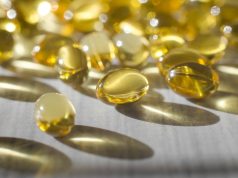Even those with significant sun exposure can have low levels of this essential vitamin
TUESDAY, April 5, 2016 (HealthDay News) — Tan skin may provide some protection against the sun’s harmful ultraviolet (UV) rays, but this increase in pigment blocks vitamin D synthesis and limits the skin’s ability to produce vitamin D, according to findings presented at the annual meeting of the The Endocrine Society, held from April 1 to 4 in Boston.
Francisco Bandeira, M.D., Ph.D., of the University of Pernambuco Medical School in Recife, Brazil, and colleagues examined 986 males and females from Recife who were between 13 and 82 years of age. All had significant daily sun exposure and none routinely used sunscreen or took vitamin D supplements. Using the Fitzpatrick skin phototype scale, the researchers assessed the response of different skin types to UV light. The participants’ sun index was also calculated by multiplying the number of hours of sun exposure they got on a weekly basis by the fraction of exposed skin.
The researchers compared the participants’ sun index scores and skin type with their blood level of vitamin D. Most of the participants with very high daily exposure to the sun had lower-than-normal serum vitamin D levels. Overall, 72 percent of the participants were deficient in vitamin D. Those lacking this nutrient tended to be older and have lower sun index values.
“Our research showed that, in a large sample of individuals living in a tropical region located 8 degrees south of the equator with very high rates of sun exposure and extremely high UV irradiation, most people had serum vitamin D below 30 ng/ml, the cut-off for normal,” Bandeira said in a news release from The Endocrine Society.
Copyright © 2016 HealthDay. All rights reserved.








